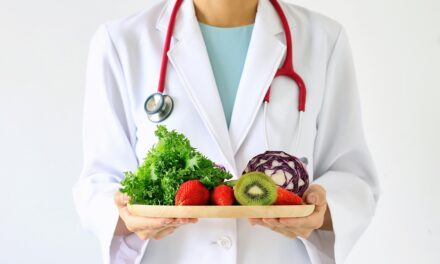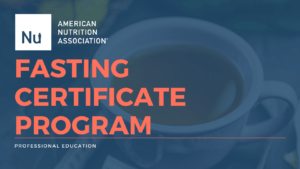The Politics of Food: How the Government Affects Our Diet

With the election in full display and hopefully soon to be resolved and in the rearview mirror (insert a big sigh of relief when that happens), it seems timely to consider the impact of the federal government on the food we eat. Its role is significant, from helping to feed the hungry to upholding the quality of our agricultural products.
According to Kerry Trueman, environmental advocate and consultant and co-author, with Marion Nestle, of Let’s Ask Marion: What You Need to Know about the Politics of Food, Nutrition, and Health, “The list of federal agencies that impact the way we eat is truly a vat of virtual alphabet soup: the USDA, the FDA, the FTC, the CDC, the HHS, the EPA, the NIH, OSHA. The Departments of Commerce and the Treasury play a role, too.”
Although not part of the federal government, the food industry lobbyists and litigators who influence these agencies also impact what we eat, she adds. “Sadly, this collaboration often pits the profits of private corporations and industrial agriculture against the health and safety of consumers. Preventable diet-related disease costs us dearly in lost lives, lost productivity, and massive health care expenses. This undue influence also weakens regulations intended to safeguard our health and protect our croplands and waterways.”
Since summarizing these influencers would merit an entire book, here’s a bird’s eye view of the federal agencies that affect food policy.
Many Federal Agencies Play a Role
All three branches of the federal government are essential to food policy. The legislative branch (or Congress, comprised of The House of Representatives and the Senate) makes laws, and—in its own words—“raises and provides public money and oversees its proper expenditure.” Some of this spending is on food policy programs, including food assistance for the needy.
Meanwhile, the judicial branch (or the Supreme Court and other federal courts) interprets laws, some of which pertain to food. For instance, in the case, “POM Wonderful v. Coca-Cola Co.” (2014), the Supreme Court decided that POM Wonderful (which makes pomegranate juice) could pursue legal action against Coca-Cola for a trademark violation. One year later, in “Horne v. Department of Agriculture,” the Supreme Court ruled that a farmer should not be penalized for failing to comply with an order to turn over a percentage of the raisins he produced to the federal government.
Although both the legislative and judicial branches are impactful, the executive branch (or the President, Vice President, and Cabinet, which work together to carry out the laws) is the most dominant in this arena. Under its auspices, The United States Department of Agriculture (USDA)—along with the Food and Drug Administration (FDA) and Centers for Disease Control and Prevention (CDC), both operating divisions of The Department of Health and Human Services—wield the most power.
This fragmented approach, especially when it comes to food safety, is problematic, according to the U.S. Government Accountability Office. Says its website, “The patchwork nature of federal oversight of food safety may make it difficult to ensure that the government is effectively promoting the safety and integrity of the nation’s food supply.”
Ensuring Food Safety and Quality
Protecting citizens is a critical part of federal food policy. Among many other responsibilities, the CDC works to prevent the spread of foodborne illnesses. For instance, so far in 2020, they’ve conducted outbreak investigations into deli meats, wood ear, and enoki mushrooms, peaches, onions, bagged salad mix, and clover sprouts. Meanwhile, the FDA is largely concerned with the safety, quality, and labeling of foods, dietary supplements, bottled water, food additives, and infant formulas. Among other initiatives, the agency has updated the Nutrition Facts label on packaged foods and drinks. The first significant update to the label in two decades, the goal was to provide consumers with the information they need to make healthy dietary choices.
Meanwhile, the USDA regulates the safety and packaging of (non-game) meats, poultry, and egg products (through The Food Safety and Inspection Service, or FSIS) and helps market U.S. food, fiber, and specialty crop products (via the Agricultural Marketing Service, or AMS). In addition, its Agricultural Research Service (ARS) pursues agricultural research, while its National Agricultural Statistics Service (NASS) provides data to farmers, ranchers, and agribusinesses. In all, the USDA is made up of 14 agencies.
Feeding the Food-Insecure
Through the USDA, The Food and Nutrition Service (FNS) provides the needy with access to nutritious food. Two of its mandates include the Supplemental Nutrition Assistance Program (SNAP) and the National School Lunch Program (NSLP). The former, whose name was changed from “food stamps” in 2008, doles out benefits each month to those who qualify based on income and household size. Now, instead of actual documents, participants use electronic benefits transfer (EBT) cards.
Supporting the Agricultural Industry
Also under the auspices of the USDA, the federal government supports the agricultural industry, by overseeing how much food is produced and how it’s priced; setting and maintaining quality standards; and promoting consumption of domestic agricultural products (as with the “Got Milk” campaign). Also key, it helps farmers and ranchers, via the Farm Bill(updated every five years) and other legislation. To incentivize the domestic agricultural industry, the USDA runs programs, which involve direct payments, price supports, supply controls, crop insurance, and more.
Encouraging Healthful Eating
The government promotes healthful eating through The Center for Nutrition Policy and Promotion (CNPP), also part of the USDA. In 2010, the agency switched from using the Food Pyramid to MyPlate, the latter of which recommends proportions of the various food groups (fruits, vegetables, grains, protein, dairy) at each meal. Updated every five years, the next version of the Dietary Guidelines for America is slated to come out in late 2020. Among other specific recommendations, the USDA suggests consuming less than 10% of calories daily from added sugar, less than 10% of calories daily from saturated fats, and less than 2300 milligrams daily of sodium. As far as alcohol goes, for adults of legal age, the government recommends no more than one drink daily for women and two drinks daily for men.





